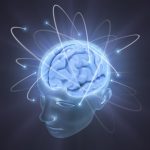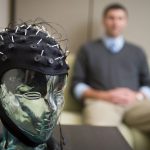Adam Marblestone on Rosetta Brains and Markers of Synapse Function
 Biography: Adam Marblestone, PhD (personal website) is developing new approaches to accelerate brain science. He is currently a research scientist and Director of Scientific Architecting with the Synthetic Neurobiology group at MIT, led by Ed Boyden, where he invents and analyzes new technology concepts while helping to guide systems integration for large-scale brain mapping. In his 2014 PhD thesis as a Hertz Fellow in Biophysics at Harvard, with George Church and colleagues, he co-authored experimental and theoretical papers on molecular recording devices and led the first comprehensive engineering analyses of whole-brain mapping approaches. He is also an advisor for the BPF.
Biography: Adam Marblestone, PhD (personal website) is developing new approaches to accelerate brain science. He is currently a research scientist and Director of Scientific Architecting with the Synthetic Neurobiology group at MIT, led by Ed Boyden, where he invents and analyzes new technology concepts while helping to guide systems integration for large-scale brain mapping. In his 2014 PhD thesis as a Hertz Fellow in Biophysics at Harvard, with George Church and colleagues, he co-authored experimental and theoretical papers on molecular recording devices and led the first comprehensive engineering analyses of whole-brain mapping approaches. He is also an advisor for the BPF.
Andy McKenzie: One of your interesting recent publications (html, pdf) is on your new technology, FISSEQ-BOINC. If I understand correctly, this would use RNA molecules targeted to cell-identifying proteins in the pre- and post-synaptic membrane of brain tissue slices, followed by fluorescence microscopy to locate them in their original positions. One of the particularly interesting aspects of this technology is that you could simultaneously capture molecular markers for the functions of the synapses that you identify.This would allow you to build towards what you call “Rosetta Brains,” which have multiple types of information measured in the same brain. Given this, I’m curious: what are some of the molecular markers you consider important for memory and/or personality that you would consider measuring at synapses? Or, how would you go about choosing them?
Adam Marblestone: First I should say that FISSEQ-BOINC development is a joint experimental project between the Church, Zador and Boyden labs, as well as other labs. A number of other new technologies are also contributing to it. I merely wrote a white-paper about how this idea fits into a broader set of constraints and strategies for brain mapping.
I’m not sure we yet know exactly which markers are most important. There are many that likely have great functional and architectural significance in the brain. This excellent paper by Stephen Smith and colleagues, [pdf here], suggests a few possibilities, including massively alternatively spliced adhesion molecules like neurexins, which could in principle generate a set of molecular rules underlying connectivity. As Smith puts it: “Two classes of synaptic adhesion proteins, the neurexins and protocadherins (PCDHs), have large numbers of isoforms and are present both during the initial formation of synaptic connections and in mature synapses. Vertebrates have three neurexin genes, each with two promoters that can drive transcription of a large α-neurexin and smaller β-neurexin95,96 (reviewed in REF. 83). Alternative splicing can generate over 1,000 neurexin isoforms, which are expressed in regionally distinct but overlapping brain regions97… With the potential for combinatorial expression of these large numbers of adhesion proteins, a vast number of unique codes would be available to provide molecular signatures for specific brain circuits in the mature brain.”
I’m particularly a fan of the neurexins for other reasons as well. As we discussed [pdf here]
Genes such as SAM68 (Iijima et al., 2011) can govern the activity-dependent alternative splicing of neurexin molecules (Treutlein, Gokce, Quake, & Südhof, 2014) that play important functions in the formation, maturation, and maintenance of synapses. The state of pre-synaptic neurexin splicing can even influence post-synaptic receptor trafficking (Aoto, Martinelli, Malenka, Tabuchi, & Südhof, 2013), potentially allowing for a configurational code that could integrate intrinsic and extrinsic cues; such neurexins are represented differentially across the brain, and across developmental stages (Iijima et al., 2011). Neurexins also interact with neuroexophilin ligands, which are differentially expressed in sub-populations of synapses (Born et al., 2014), to influence synaptic function.
Smith’s paper also lists a number of other molecules of clear functional interest, like neurotransmitter receptor subtypes, or different types of vesicular transporters, that could give rise to a diversity of synaptic time constants, short-term and long term plasticity mechanisms, and learning rules.
The interaction of synaptic communication with modulatory pathways is also important. Moreover, we should measure molecular distributions not just at synapses, but elsewhere in the cell as well, e.g., the distributions of different ion channel subtypes along the membrane, which will shape the cell’s dynamics.
Andy McKenzie: In your hypothetical Rosetta Brain scenario, what type of brain preservation protocol(s) do you think would best allow neuroscientists to retain the relevant information so that they can learn the most about the topic that they are studying? For example, considering that the process of fixation usually involves protein cross-linking, are you concerned that some of the molecular markers, gene expression, or protein post-translational modification states might not be easily retrievable from fixed brain tissue?
Adam Marblestone: This problem is definitely worth exploring further. We know that we can already get a lot of useful spatially resolved transcriptomic and proteomic information from fixed tissue, such as with conventional immunohistochemistry or RNA FISH, but we also know that antigen accessibility can depend on the precise fixation conditions. I do think that methods involving rapid tissue vitrification could be powerful, and might even be necessary at some level. Any method will have to be validated and optimized. As researchers develop higher resolution and increasingly multiplexed imaging methods at the nanoscale, we can hopefully start to see the effects of different tissue preservation conditions in more detail.
Andy McKenzie: Thank you very much, Dr. Marblestone!







